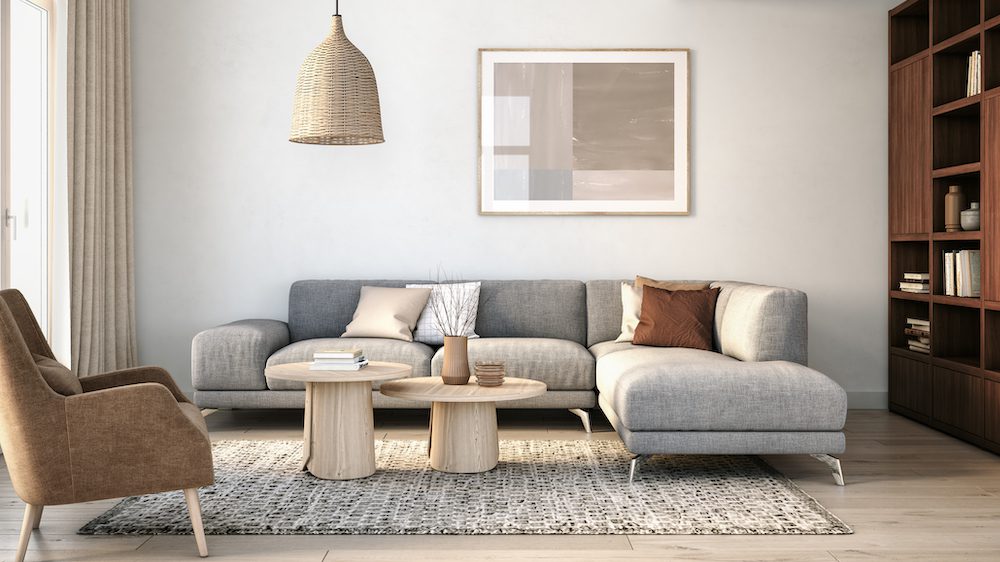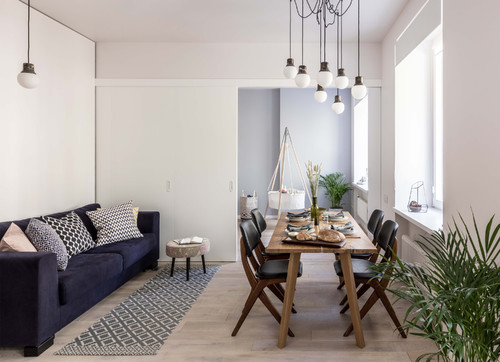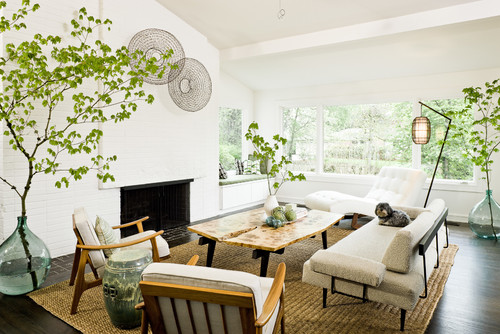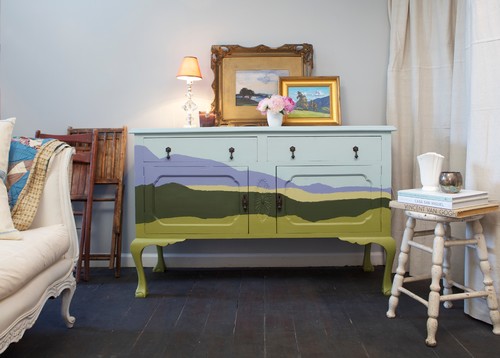
CreativaStudio/Getty Images
Remember the days of rooms filled with matching wood tones—everything purchased from a matching set and displayed exactly as they were arranged in the furniture showroom? Thankfully, those days are long gone.
The trend these days is more eclectic, and filling your rooms with a mix of wood tones is not only allowed—it’s also encouraged! But after decades of believing that everything has to match just so, it can be challenging to retrain your brain to make smart and somewhat unconventional design choices.
How do you match wood tones that don’t, well, match? How far is too far when it comes to mixing it up?
We understand your confusion, and we’re here to help. We went straight to our interior design experts to find out their best tips for mixing wood tones, and how to translate these tips into your space.
There aren’t any strict rules (and that’s the fun of it), but here are a few guidelines to get you started in the right direction.
1. Consider your floor
Your floor literally serves as the base of your room, so you can’t leave it out of the equation—especially if your floors are wood.
Megan Thompson, owner of Denver-based interior design firm Spark Interiors, cautions against having your furniture pieces match too closely with the floor, or else they risk blending together.
“Make those furnishings stand out by creating a contrast between the furniture and the flooring,” she explains. “Does your floor have a light stain to it? If so, you should add darker furniture to the space to add a nice contrast to the room.”
Thompson also suggests considering an area rug, even though it may mean covering up some of that gorgeous floor.
“You could have a lot of different-colored wood furnishings in your room, but an area rug would be the perfect backdrop to tie the room together,” she explains. “It would act as common ground underneath all your chairs and table legs, which can create a pleasant transition between the seating area and the wood floor.”
2. Understand the undertones
Mixing different types of wood like a pro means paying attention to the dominant wood tone in a room. This will typically be your hardwood floors, cabinets, or large pieces of furniture. Then identify the undertone.
Most wood varieties—like walnut, oak, or cherry—have warm undertones, but you can also see the occasional cool undertone in wood that has been stained.
“If you’re OK with a bit of contrast, include darker woods like Brazilian cherry or mahogany alongside lighter woods like natural birch or pine,” says Rex Chatterjee, creative director of Dune Road Lifestyle.
3. Pay attention to the wood grain
Photo by Studio Schicketanz
“Color isn’t the only thing that matters when designing with multiple wood tones,” explains Mark Scott, President of MARK IV Builders. “It’s important to remember to feature a mix of wood grain patterns such as stripes, swirls, and flame-like shapes to add visual interest in your design.
“If you’re looking to create a rustic design, use larger wood grains. For a more polished, formal look, use smaller ones,” he adds.
4. Don’t go overboard
Despite what you have heard, you can have too much of a good thing—and that’s also true with mixing wood finishes.
“The last thing you want your design to do is make the room look chaotic because there’s too many wood colors,” says Scott. “Keep your choices to two or three wood finishes so everything throughout the space looks balanced.”
5. Don’t forget about painted woods
Painted wood finds are everywhere you look these days, from boutique shops to yard sales, and they’re perfect for a space full of mixed wood tones.
“Painted and distressed vintage finds add great character to your spaces,” says Kathryn Nelson, principal and interior designer at Kathryn Nelson Design. “They make for fun conversation pieces.”
6. Remember: It’s not all about wood
Photo by Peruri Design Company
Reality check: No one wants a room that’s nothing but wood.
“Incorporate upholstered furniture or acrylic accessories to soften and add visual interest to the space,” says Keira Schultz, interior designer and principal at KSDesigns, in Arizona. “This will complement all those multiple wood finishes.”
The post The Right Way To Mix Wood Furniture and Finishes: 6 Tips From Design Experts appeared first on Real Estate News & Insights | realtor.com®.






No comments:
Post a Comment